Note: This website was automatically translated, so some terms or nuances may not be completely accurate.
No longer someone else's problem!? An Introduction to China Inbound. AISAS, SIPS, and...
Haven't you noticed a significant increase in foreign tourists lately?
The rise in Chinese tourists is particularly noticeable, and inbound consumption in Japan is showing further growth. Consumption in Japan and China is expected to become increasingly interconnected.
Amid this situation, the Dentsu Group cross-organizational unit "Dentsu China Xover Center," abbreviated as "Dentsu CXC," was launched in June 2019 to address the marketing challenges of the Japan-China hybrid market faced by Japanese and Chinese companies through cross-border initiatives.
In this first installment of the series, strategic planner Takashi Muto introduces the "SSS Frame," a conceptual model for Japan-China crossover consumer behavior released by Dentsu CXC in December.
Dentsu CXC Launches!
The number of foreign tourists was approximately 6.8 million in 2009, ten years ago. By 2018, it had surpassed the 30 million mark, and the government aims to reach 40 million by 2020.
Among these, Chinese visitors to Japan have increased significantly over the past five years. In 2018, they reached 8.38 million, making China the largest source country/region by volume.
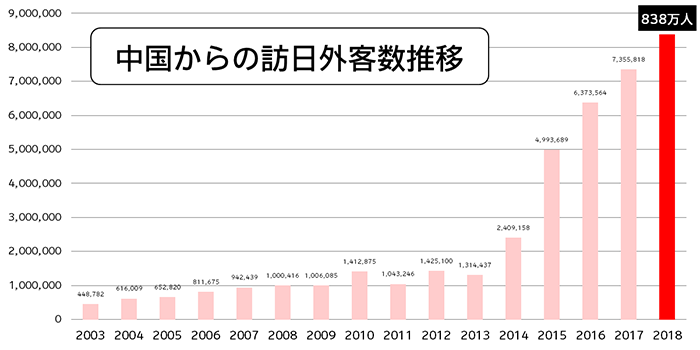
As the Japanese market matures, capturing Chinese demand has the potential to become one of the growth engines for Japanese companies. Marketers will increasingly need to develop planning that comprehensively considers both markets.
Against this backdrop, Dentsu Inc. launched the cross-group organization "Dentsu CXC."

Dentsu CXC Official Website
https://cxc-dentsu.com/
Dentsu Inc. Release
https://www.dentsu.co.jp/news/release/2019/0529-009829.html
Developing the "SSS Frame" Conceptual Model for Japan-China Cross-Border Consumer Behavior
We developed the "SSS Frame" concept to effectively capture the demand from Chinese visitors to Japan, a major future consumption trend, recognizing the need for a framework to categorize Japan-China crossover consumption behavior. Based on various surveys, it was developed through repeated discussions involving CXC members, the Takahashi (Kuni) team from Dentsu Inc.'s Inbound Division, and external experts.
Dentsu Inc. previously developed the "AISAS" model for the internet era and the "SIPS" model for the SNS era. The "SSS Frame" is the model designed to address the upcoming Japan-China crossover era.

Dentsu Inc. Release
https://www.dentsu.co.jp/news/release/2019/1202-009966.html
Now, let's explain each process concretely using the example of Lily (20s/Shanghai), a fictional Chinese woman traveling to Japan for the first time, incorporating her interview responses.
Before the trip, gaining "Sympathize" is crucial.
After that, "Explore" and add to shopping list if satisfied
【Lily Interview】
Q. How do you usually learn about Japanese products/services?
I check Japanese products by watching beauty report videos by celebrities and KOLs (Key Opinion Leaders) on RED (Xiaohongshu: China's Instagram equivalent). I also check interesting Japanese news on Weibo (Weibo: China's Twitter equivalent) accounts. I often see posts about Japanese fashion trends and daily necessities on WeChat accounts I follow, admiring their beautiful designs and practical functions. On bilibili, I also enjoy watching fun videos featuring Japanese products.
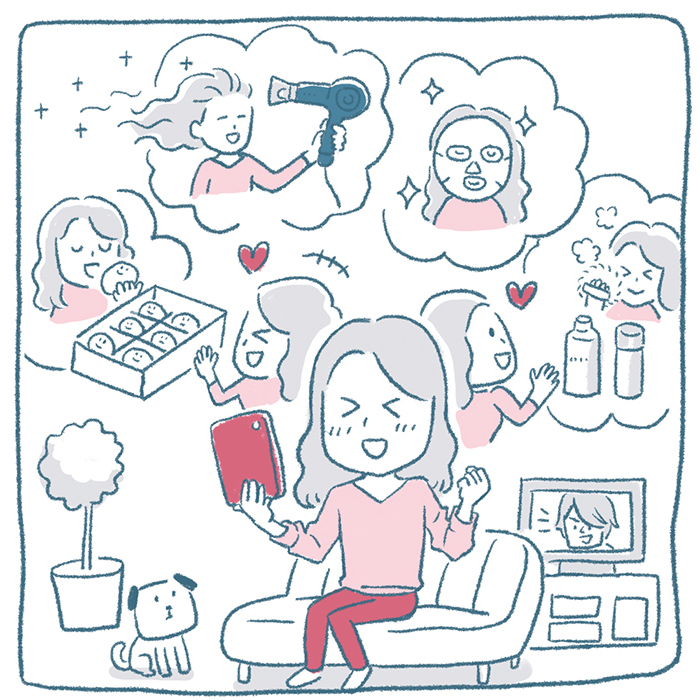
Q. How did you research Japanese products/services before your trip?
First trip to Japan. I searched for place names on Baidu (China's Google equivalent), read people's travelogues, and checked Tokyo cafe rankings. I looked up cosmetics I was interested in on RED after asking a friend knowledgeable about Japanese beauty products, then saved the items I wanted to buy on my phone. After purchasing my flight ticket on Ctrip (China's Expedia equivalent), I was added to a WeChat group where V-guide (online travel guide) provided advice and important notes for traveling in Japan.

[Explanation Here]
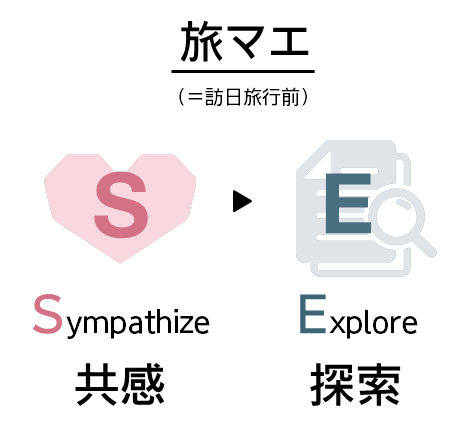
Before the trip, "Sympathize" is crucial. Aiming solely for "Attention" means your product will get buried and overlooked among the vast sea of information on domestic Chinese goods, Western goods, Korean goods, Japanese goods, etc. Therefore, we believe it's vital to create encounters that can achieve "Sympathize."
Research shows that for Chinese consumers, information from family, friends, acquaintances, and social media sources (like influential KOLs) is valued more than mass advertising like TV commercials when gathering product information. We need to create opportunities for encounters through relatable people and relatable information sources.

If they "Sympathize" with your brand, it leads to subsequent voluntary "Explore" behavior. If they are convinced, they will add your product to their shopping list. As shown in the survey results below, only 13.5% of people do not create a shopping list before their trip. Getting your product added to their shopping list before the trip is crucial.
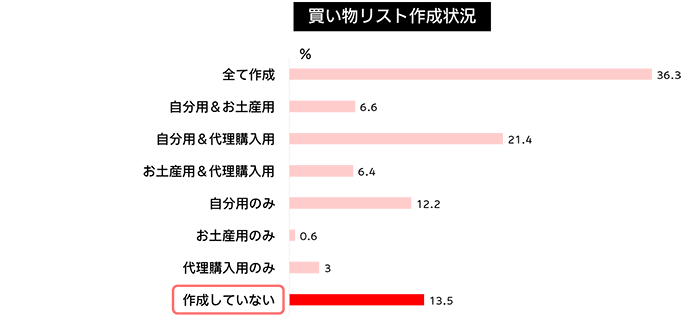
During the trip, "Surprise" creates competitive advantage and drives the push for "First Purchase"
【Lily Interview】
Q. What kind of information did you encounter during your trip? What left an impression?
Reading magazines on the plane, I discovered new cosmetic products and got drugstore coupons. I thought it was very considerate that the cosmetics ads at the airport were written in Chinese. I was surprised by the quietness on the train. On the other hand, I was shocked by the crowds and ads at Shibuya Crossing. A skincare ad I saw on the Yamanote Line looked good, so I searched for it on Baidu. The people on the streets were also very kind, and I thought it was a tourist-friendly country. V-guide shared info in our group chat about cosmetics on sale at a Shinjuku department store, so I decided to take advantage of it.
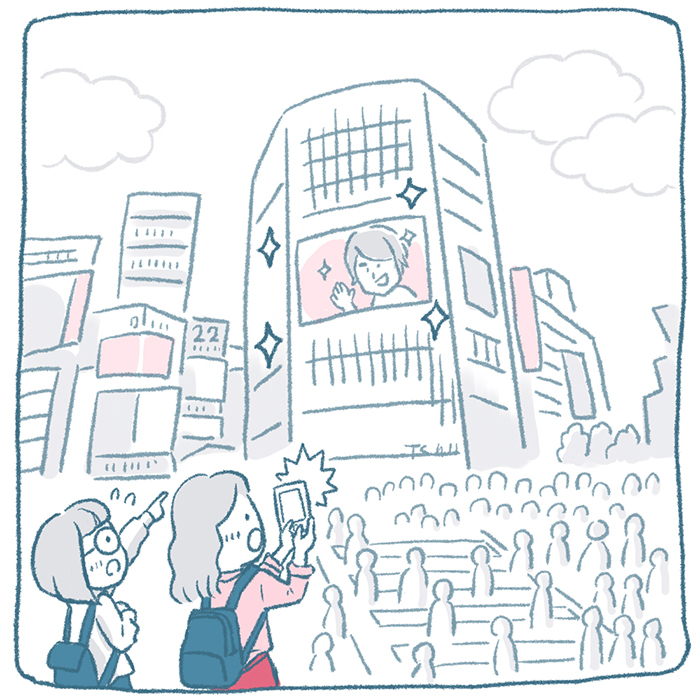
Q. How did you make your first purchase?
I went to a drugstore I'd heard was cheap to buy cosmetics and supplements. Seeing the WeChat Pay (Weixin Zhifu: China's PayPay) and Alipay (Alipay: China's PayPay) logos made me think it was a friendly store. Once inside, there were so many products, and I couldn't read anything but the kanji, so I got lost. I searched using notes saved on my phone and asked staff while adding items to my basket. I put products I recognized and found interesting in my basket for now. I spotted cosmetics popular on RED but unavailable in China and added them to my basket without hesitation. I also bought a toner with a "No.1" sticker.

[Explanation here]

The "S" in Travel Mid is defined as "Surprise." During the Travel Mid phase, which allows for deeper information and experience provision than Travel Before, achieving a sense of surprise, however small, creates a strong impression. This positively influences subsequent actions like "Purchase" and "Share."
In a survey of Chinese visitors to Japan conducted by "Dentsu CXC," when asked what impressed them most about their trip, many mentioned being surprised and moved by the cleanliness of the city, the kindness of the people, and the good manners.

In a situation where few people yet share episodes related to specific products or brands, we believe that providing surprising and moving experiences, along with deep and timely information during the travel journey itself—where we can convey deeper experiences and insights than those available in China—presents a prime opportunity to gain a competitive advantage ahead of rivals.

Post-trip experiences should connect to "Share" and ultimately drive "Purchase."
【Lily Interview】
Q. If you liked a product after returning home, how would you recommend it?
During my trip, I posted a product I bought that day on my WeChat Moments (Friends Circle: SNS timeline). Friends contacted me asking me to buy it for them. I also received recommendations for supplements and facial devices. When giving souvenirs to friends and colleagues back home, I shared travel memories and introduced products I bought and tried during the trip that I liked. A friend who happens to be going to Japan next month heard my story and immediately started taking notes on their phone and researching.
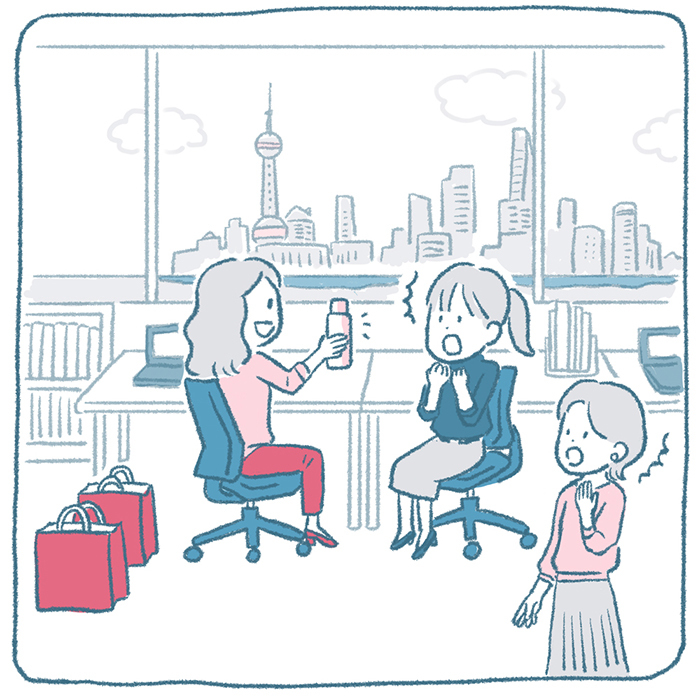
Q. How will you make your next purchase?
About a month after the trip, my favorite skincare products from Japan were running low. Too busy to go back, and with the November 11th (China's "Singles' Day") sales campaign approaching, I checked the Tmall (China's Amazon) flagship store. They were running a pre-sale campaign, so I reserved two sets of limited edition packaging—slightly pricier than in Japan, but worth it.
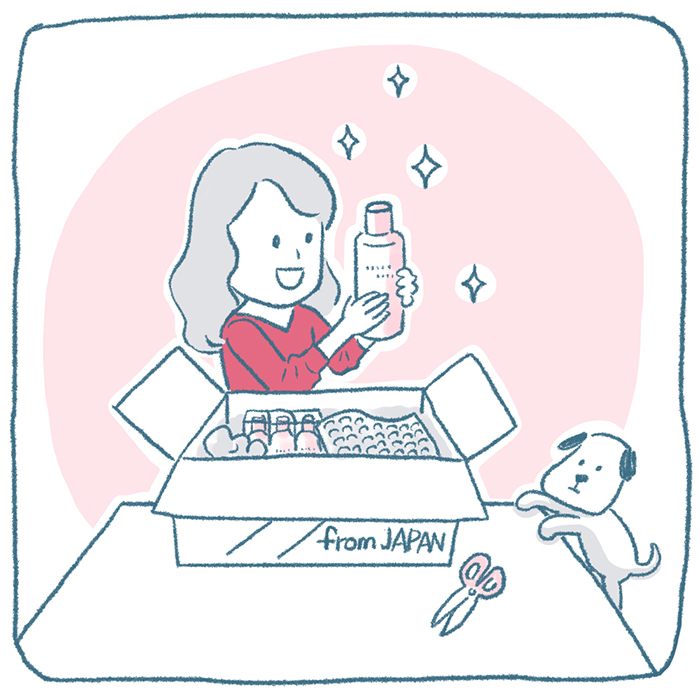
[Explanation here]

Products first purchased during a visit to Japan that prove effective are "shared" via social media and in person, leading to "sympathy" among those around them before their own trips.

The survey also revealed that popular products are frequently repurchased by many people through cross-border e-commerce.
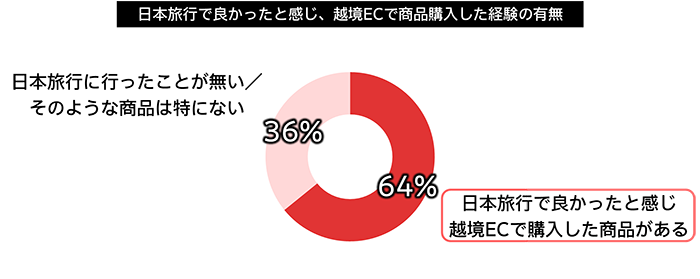
The above introduced the overview of the "SSS Frame" through Lily's experience.
Feel free to utilize the "SSS Framework" as you see fit.

As explained, planning seamlessly across the "Pre-trip," "During-trip," and "Post-trip" phases for both the Japanese and Chinese markets is a crucial perspective for future inbound tourism, cross-border e-commerce, and China marketing.
Dentsu CXC hopes that by enabling many people to freely utilize the Japan-China Cross-Over Consumer Behavior Model concept, the "SSS Frame," the Japan-China hybrid market will continue to grow even more vibrantly. Stay tuned for future installments.
For inquiries, please contact us here.
Dentsu Inc. Dentsu CXC
Email: dentsucxc@dentsu.co.jp
Was this article helpful?
Newsletter registration is here
We select and publish important news every day
For inquiries about this article
Author

Takashi Mutō
Dentsu Inc.
First Integrated Solutions Bureau
Engaged in concept creation for advertising, spatial design, and animation, as well as communication/brand strategy planning for automobiles, tires, theme parks, beverages, and consumer goods both domestically and internationally. Assigned to Dentsu China in Shanghai for four years starting in 2012. Representative of Dentsu Japanimation Studio. Representative of 1/40 Studio. Founding member of Dentsu China Xover Center (Dentsu CXC).

